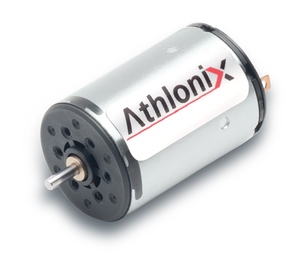
 |
Charlotte Stonestreet
Managing Editor |
| Home> | DRIVES & MOTORS | >DC Motors | >Humanoid development needs torque-dense motors |
Humanoid development needs torque-dense motors
11 November 2024
Humanoid robots rely heavily on smooth and controlled joint and limb motion, making selection of the motors that power the axes of motion critical, asserts Katie Guiler

HUMANOID ROBOTS can be equipped with a 'brain' tailored to their specific tasks, supported by targeted programming and artificial intelligence. Despite this customisation, they share a common human-like form, including hands or grippers. While sensors and tools can be added for physical modularity, the motor skill requirements for humanoid robots remain broadly similar across various tasks.
For robot developers, the general universality in physical motion enables a single humanoid design to be used as a basis for multiple applications. However, to achieve this scale of movement and utility for widespread tasks, humanoid robots typically need to optimise 20 or more degrees of freedom. Accordingly, the operational performance of the actuators that power these axes of motion is crucial.
Increasing torque density and efficiency
Portescap, which designs and manufactures miniature motors, recently specified a motion solution for an existing humanoid robot design. The robot manufacturer needed compatibility with their existing drives and controls but wanted to increase torque density and reduce mass. This would be central to improving the robot’s precision by optimising control of movement, increasing responsiveness, and reducing inertia. The robot developer also wanted to extend battery lifetime, and balance cost with value.
The engineering team determined that the characteristics of a brushed DC motor would best fulfil the requirements. Providing simplicity of control, this motor design would ensure integration with the humanoid’s existing architecture. While achieving the cost-point required by the OEM, the inherent characteristics of a brushed DC motor would be well-matched to a humanoid’s close human interaction, where the advantages of high torque at low speed would enable fine control. The stable and predictable performance of a brushed motor design would also suit this environment.
Portescap specified a 16DCT Athlonix motor, based around a coreless design. This would save significant weight compared to incorporating a traditional iron core and enable greater responsivity and smoother motion thanks to reduced inertia. Neodymium magnets would also increase torque density by achieving a stronger magnetic field, enhancing the interaction with the motor windings.
The coreless design was also specified to increase efficiency and reduce energy consumption by removing the effects of hysteresis and eddy current losses associated with a conventional iron core DC motor. Precious metal commutation would also enhance efficiency by reducing resistance and minimising the voltage drop across the brush-commutator interface.
Miniature motor customisation
The optimised ironless construction of the motors allowed cooler operation and improved power density. Motor inductances were adjusted to match drive requirements, ensuring optimal speed and torque characteristics.
To further minimise weight, the engineers customised the windings with lightweight, self-supporting coils. Combined with the coreless design and neodymium magnets, these advantages achieved up to an eight per cent reduction in motor diameter while delivering the necessary torque.
To further increase durability, as well as improve torque transfer, the engineers also integrated the pinion gear into the motor shaft. This approach would optimise alignment and enhance control at each axis, minimising play, which would also reduce mechanical wear.
Thanks to the collaboration between the robotic and motion engineering teams, the developer was able to achieve the targeted size and weight as well as the required motion profile for each axis.
Katie Guiler is digital marketing specialist III at Portescap
- Understanding the effect of PWM when controlling a brushless DC motor
- Largest addition to flat motor portfolio
- Ultra high torque brushless motor
- Ultra-high torque in the smallest package
- Micro-motion control
- Reliable control for automated medication dispenser
- Miniature motion solutions
- New miniature motor R&D facility
- DC motor with integrated driver
- The New 22ECP35 Ultra EC Brushless Motor: Get the right balance of speed and torque at an optimum price
- Laser Distance Measurement
- EXTENSIVE STOCK & RAPID DELIVERY
- ZTRS Precision rack and pinion drives
- Customised Motors
- Rossi UK Aftermarket Repairs
- The final push: In two months, Roboy will be brought to life.
- ESCON 36/3 EC
- Formula Renault 3.5 now with maxon motors
- Custom windings
- In it for the long run



















